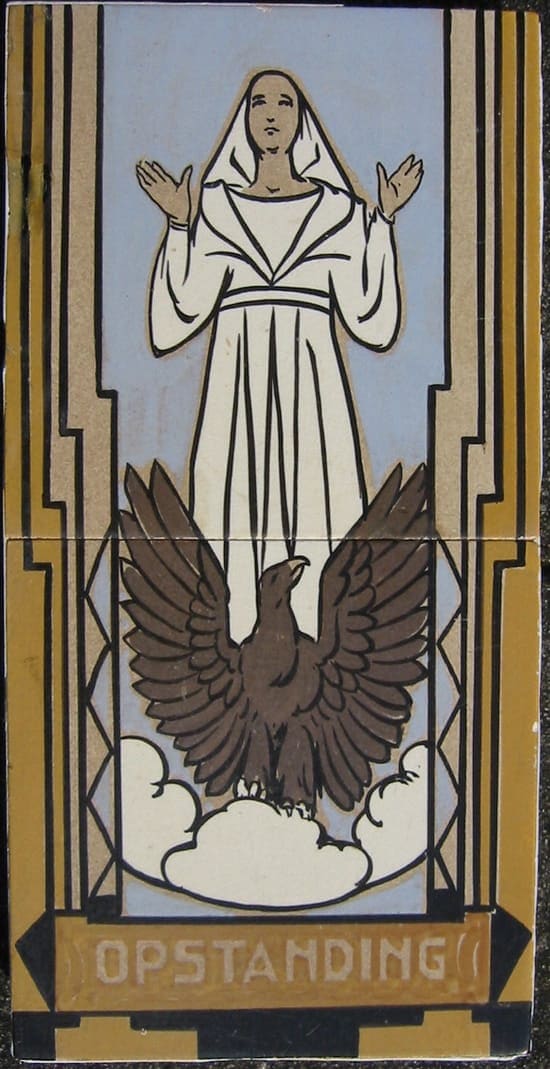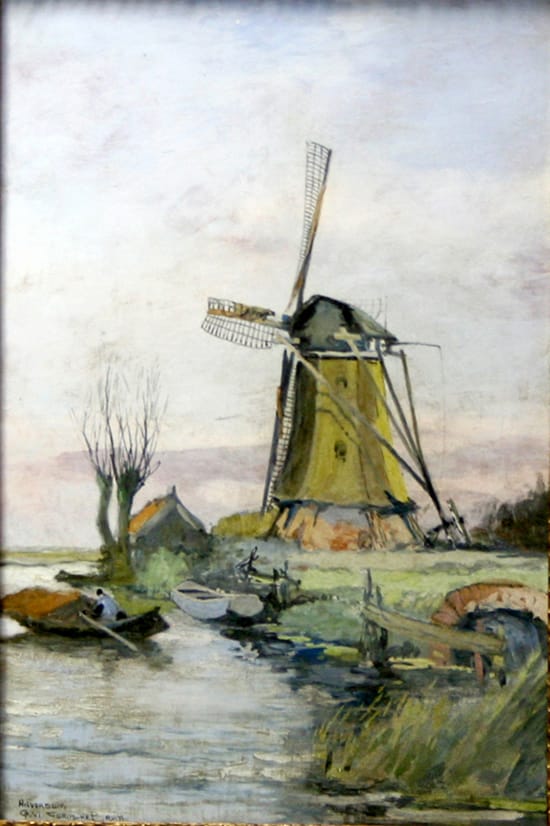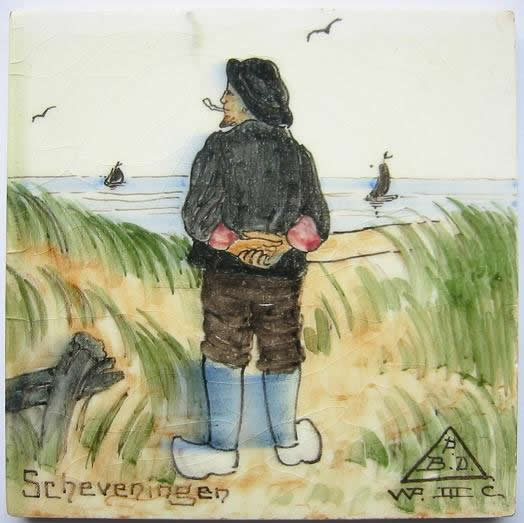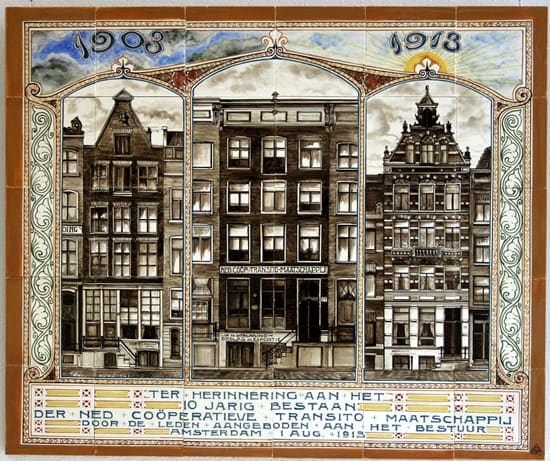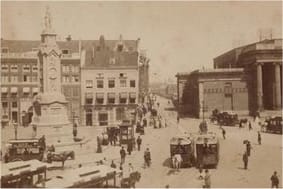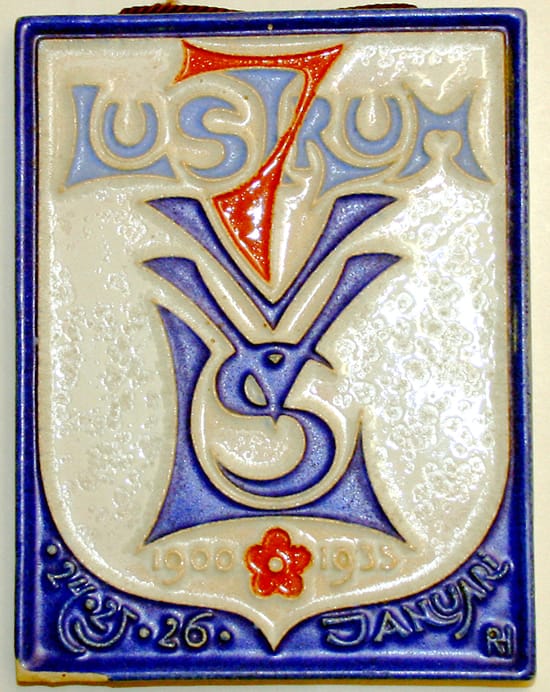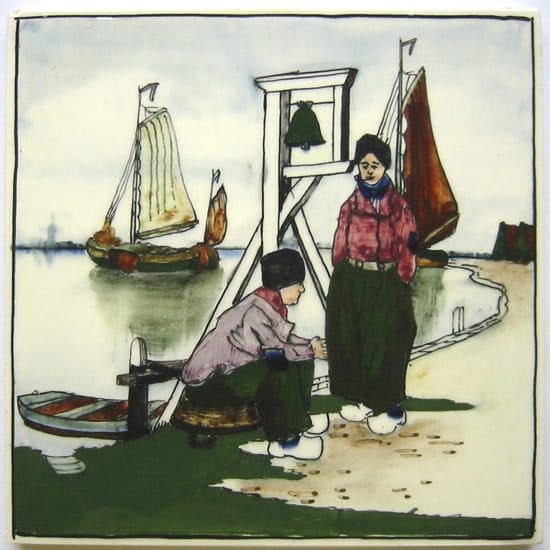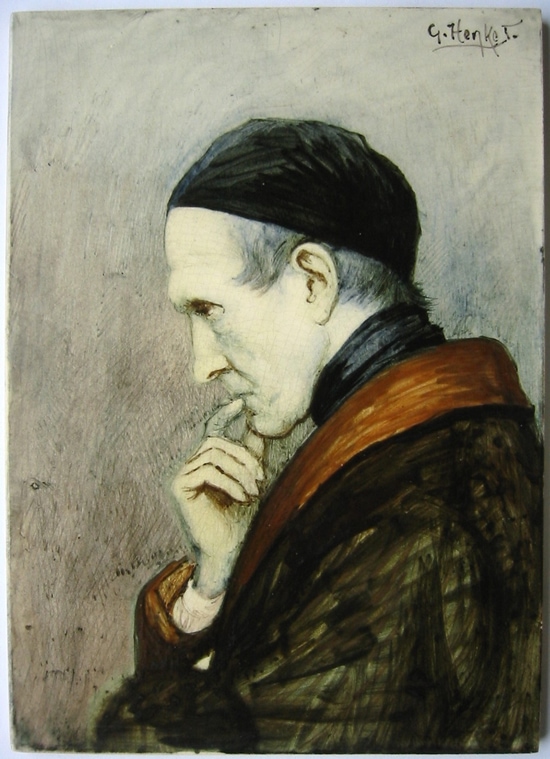Apart from a single ceramic monument, nothing in Hilversum reminds us of the existence of the highly successful Plateelbakkerij 'Delft' between 1902 and 1923, which was also known internationally as the Briegleb factory. The originally German industrialist Otto Briegleb, who also owned the Ripolin paint factory on the Laarderweg in Hilversum, managed to expand his company, originally founded as a factory of Delft blue tiles, into a very important producer of tiles, tile plates and tile pictures. At the 1905 World Exhibition in Liège and the 1906 World Exhibition in Milan, the PBD attracted great public interest with its tile pictures. The Dutch Tile Museum in Otterlo presents a number of PBD tableaux, but on account of the unique loan from Bert-Jan Baas, the Goedewaagen Ceramics Museum has by far the most extensive collection.
WebAssen
In 1905 the Amsterdam tile maker Arnold Heystee was given a prominent role in the production of tile pictures of the 'Delft' tile factory in Hilversum. As a protégé of Heystee, Cornelis de Bruin set to work making contemporary ceramics. He painted tile pictures and made a special series of art ceramics that was released under the name Dorna.
The 300th anniversary of the birth of Rembrandt in 1906 inspired the ambitious tile dealer Arnold Anthonius Marie Heystee (1876-1941) to develop a marketing concept for his tile editions that was as daring as it was modern. He published a Dutch and English language copper-engraved catalogue with black and white reproductions of both 17th century paintings and oil paintings by so-called Modern masters from the second half of the 19th century.
Kort na 1900 werd het een rage. Jubilerende fabrikanten, verzekeraars, winkels en bestuursorganisaties lieten bij de grote faïence- en plateelfabrieken tegeltableaus schilderen. Naast Porceleyne Fles en Rozenburg waren de uitvoerders vooral de Amsterdamse tegelbakkerij De Distel en de Hilversumse Plateelbakkerij Delft.
Vanaf de jaren 80 van de 19e was het de Delftse aardewerkfabriek De Porceleyne Fles die in Nederland een prominente rol vervulde als producent van monumentale tegeltableaus en bouwkeramiek. Het waren Adolf le Comte (Rijswijk, 1850 – Den Haag, 1921), docent ook aan de Polytechnische School in Delft, en Leon Senf (Delft, 1860 – Alkmaar, 1940), die jaren achtereen in diverse keramische technieken tableaus uitvoerden.
Bij de stichting van de Plateelfabriek Rozenburg in 1883 koos de nieuwe fabriek voor een eigen, toen ook grensverleggende moderne keramiek. Daarmee kwam ook een uitgebreide productie van tegels, tegelplaten en tegeltableaus op gang. Sleutelfiguur daarbij was Daniël Harkink. Hij hielp geestverwante jonge kunstenars op weg bij het plateelschilderen en was ook verantwoordelijk voor de decoratietechnieken.

